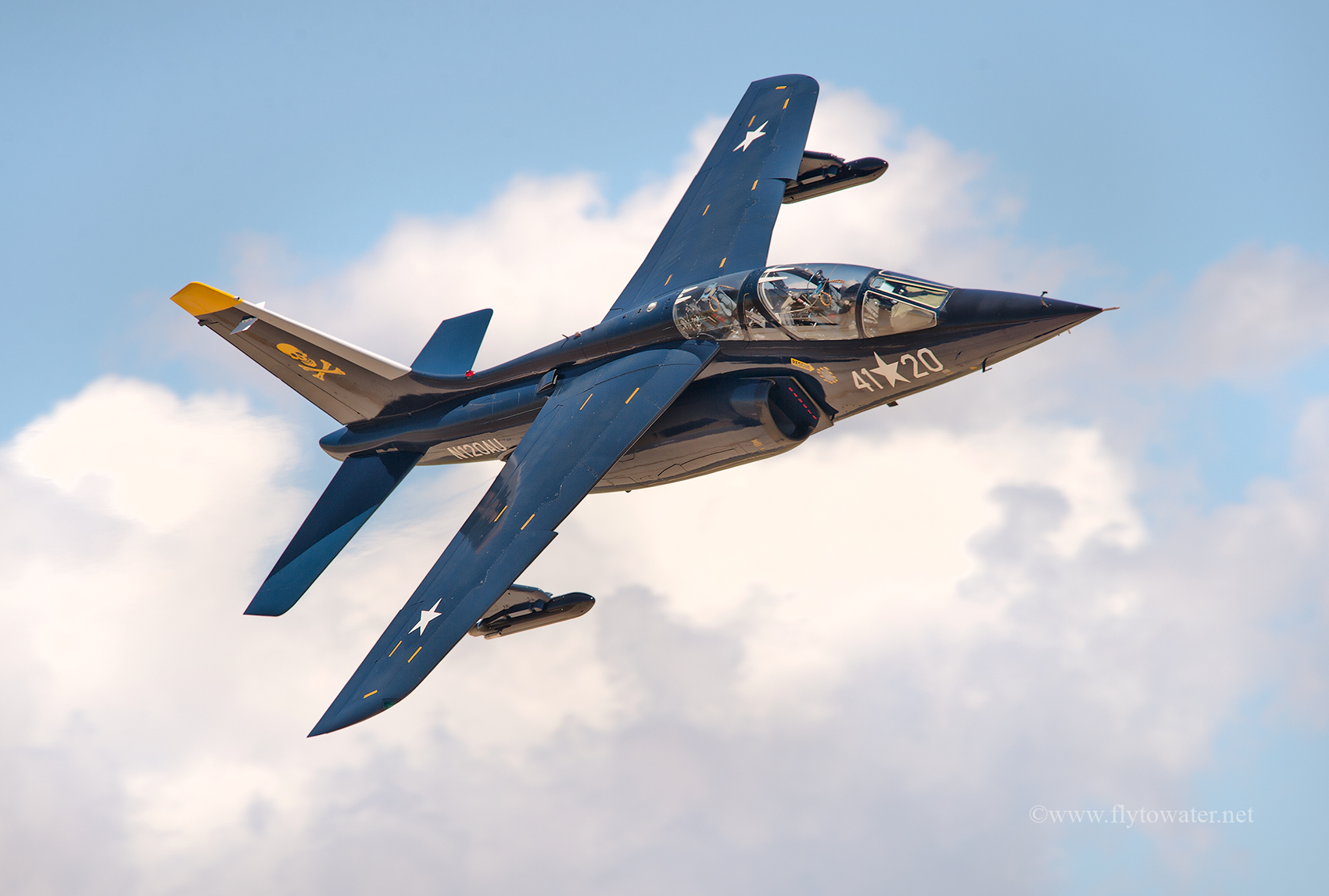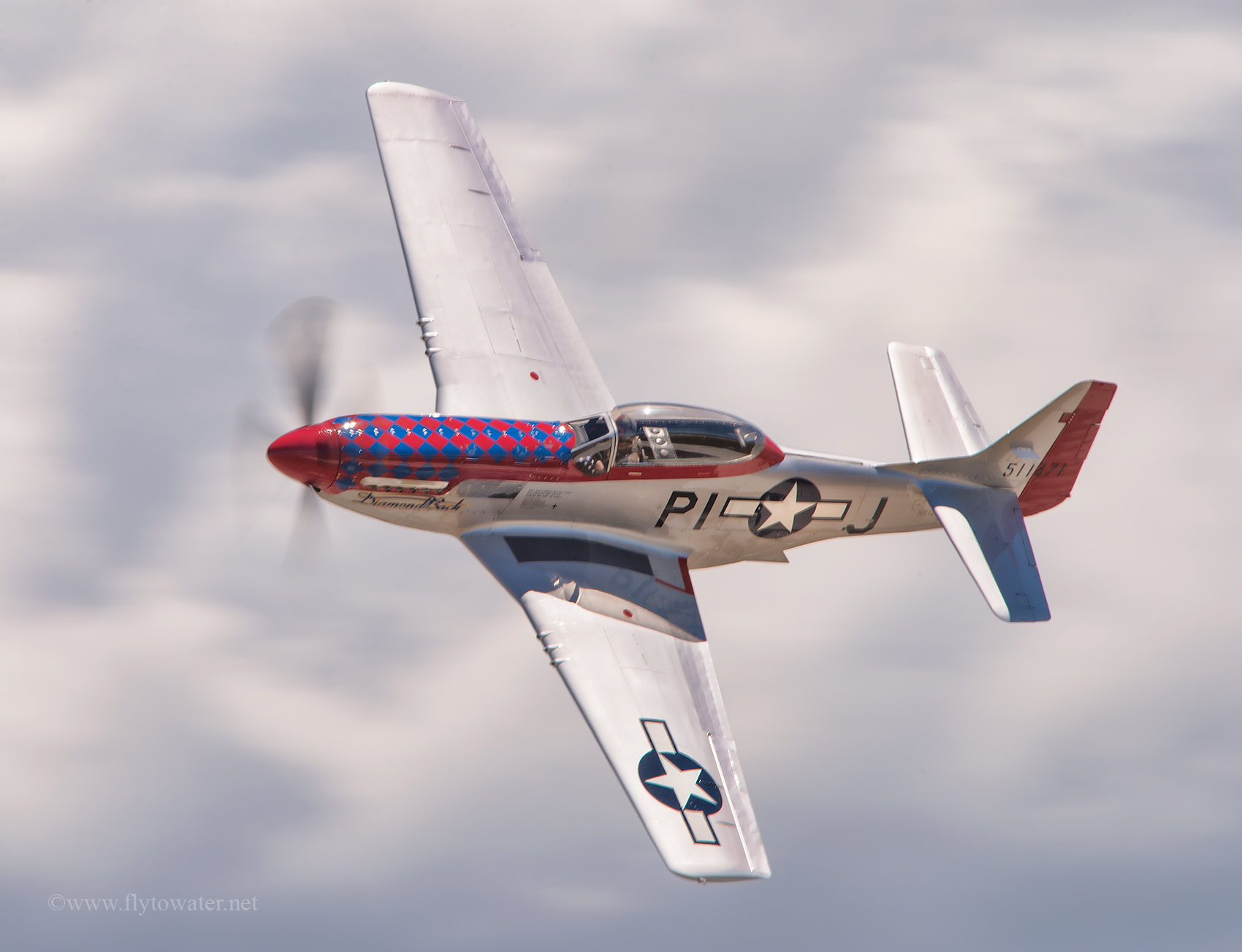OK so you want to photograph some jet aircraft in-flight. Happily, as I mentioned in the last post, it's really the prop-driven scenario that results in most of the expletives.
The same fundamentals of composition apply - you want an engaging wing position and a background that helps tell the story of flight for a complete image. Blue sky shots are inevitable in some cases - you'll just be happiest with clouds or uncluttered terrain.
Beyond the considerations of where to shoot from in order to get your best chance at supportive background material, a good place to start with jets is f/8 or somewhere around 1/800. If panning, you can play around with slower shutter speeds to blur clouds or terrain in the out-of-focus area of the frame. Faster shutter speeds are fine - anything 1/800 or faster should freeze motion and produce a sharp result.
Worth mentioning is an optical reality that comes from shooting at small apertures against light backgrounds such as clouds or sky: You will find that even the smallest amount of sensor dust becomes visible in the image under these conditions. If you can use a larger aperture to get the results you're after, this will be much less of an issue. Even a sensor you thought was clean will often show dust at f/16 and beyond.
In short - it's f/8 and be there with the fast movers. If you want to experiment with blurred terrain as a panning effect, consider starting around 1/125 and making adjustments as needed.
Dassault/Dornier Alpha Jet #N120AU (Private)
f/8, 1/800, ISO 200



